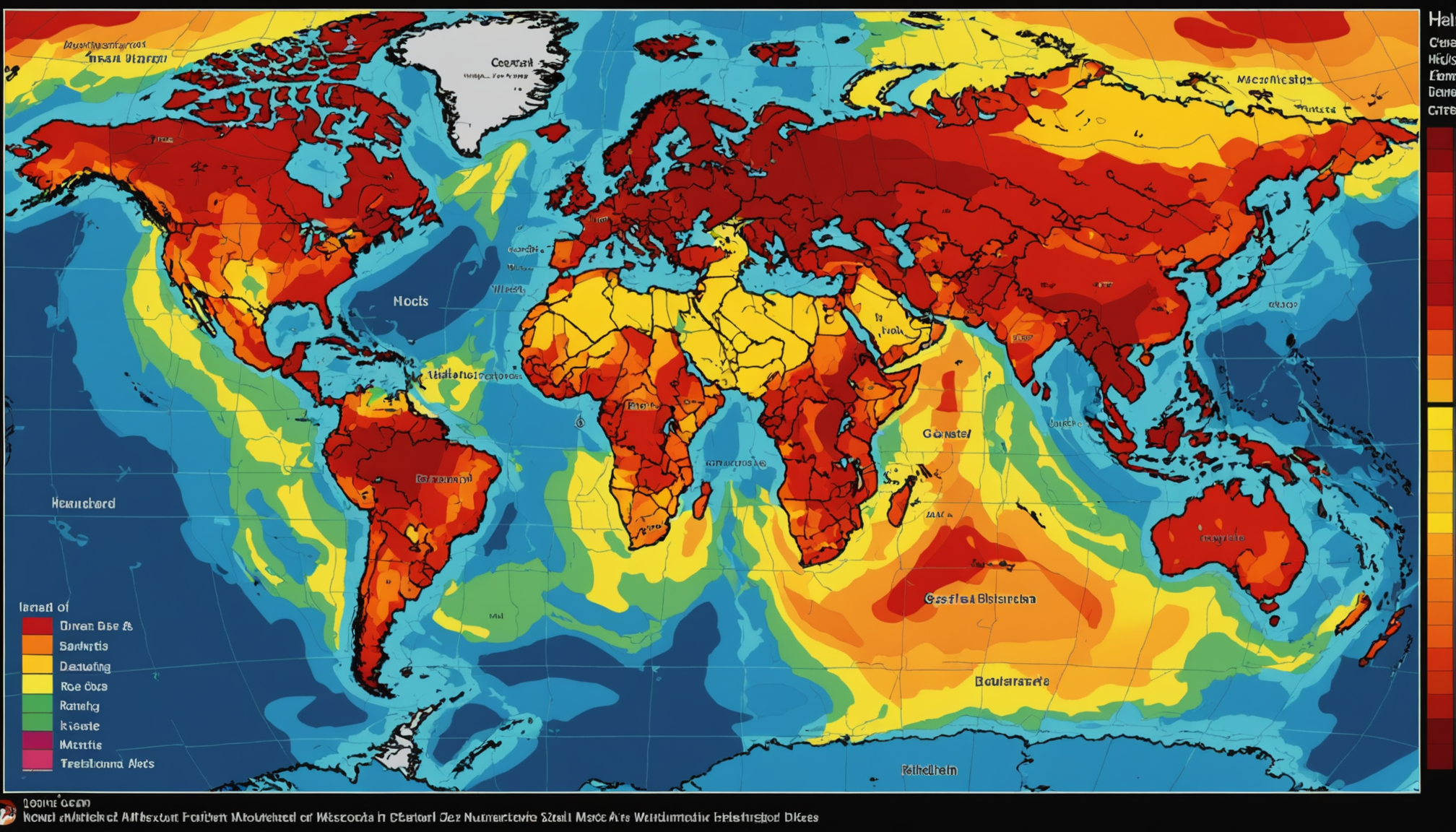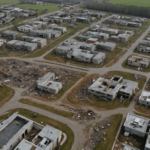Understanding the specific natural disasters that pose the greatest risk to your home and area is the first crucial step in enhancing your disaster preparedness. Each geographical area is prone to specific types of natural disasters, and identifying these will help you tailor your preparation efforts effectively. Begin by researching the historical patterns of disasters in your region. This information can often be sourced from local government websites, historical weather data, or geological surveys. Pay close attention to the frequency and severity of these events, as well as any seasonal patterns.
One practical approach to assessing your local risks is to consult regional risk assessments or hazard maps. These resources, often developed by governmental agencies or research institutions, provide a visual representation of potential natural disaster risks. They can help you understand how your locality compares to surrounding areas in terms of vulnerability. For instance, residents living close to coastlines may be more susceptible to hurricanes and flooding, whereas those in inland areas might be more likely to encounter tornadoes or severe storms.
Communication with local government authorities and community organizations will also provide valuable insights. Many local governments conduct regular disaster readiness workshops or public meetings where they discuss potential risks and community preparedness strategies. Engaging with these resources allows you to not only learn about potential threats but also understand what community resources are available in the event of a disaster.
Understanding your local climate conditions is another important factor. Climate patterns such as El Niño or La Niña can significantly alter weather patterns and lead to increased risks of certain disasters. Having a grasp of these patterns will help you anticipate unusual conditions that might increase the likelihood of a disaster occurring.
| Disaster Type | Common Areas Affected | Seasonality |
| Hurricanes | Coastal regions in the Southeastern and Eastern US | June to November |
| Tornadoes | Midwestern and Southern US (Tornado Alley) | Spring and early summer |
| Earthquakes | Western US, especially California and Alaska | Year-round |
| Wildfires | Western US, particularly California | Late summer to early fall |
Once you’ve gathered comprehensive information about the potential disasters in your area, start by categorizing these risks based on their likelihood and potential impact. This categorization will enable you to prioritize your preparation efforts effectively. Consider both short-term preparations such as readiness for sudden occurrences of severe weather and long-term strategies like structural modifications to your home to withstand severe impacts.
Understanding local natural disaster risks is not a one-time task but a continuously evolving process. Environmental changes and urban development can alter risk patterns, making it vital to stay informed through regular updates from local news, meteorological agencies, and scientific publications dedicated to climate and geological studies. Maintaining awareness and readiness will ensure that you and your family are better protected in the event of a natural disaster.
creating an emergency communication plan
Creating an effective emergency communication plan involves ensuring that you and your loved ones can stay connected and informed during a natural disaster. It’s crucial to establish clear lines of communication and protocols to follow when disaster strikes. Here’s a step-by-step guide to setting up your plan:
- Gather Important Contact Information:
- Create a contact list that includes phone numbers, email addresses, and any social media handles for family members, close friends, and neighbors.
- Include contact information for local emergency services, such as police, fire department, hospital, utility companies, and your insurance agent.
- Make sure to have the contact details of community resources, such as shelters and local government agencies.
- Establish a Primary and Secondary Communication Method:
- Choose two communication methods, such as phone calls and text messages, as your primary means of contact. Keep in mind that text messages may be more reliable during high call volumes.
- Designate an alternative method, such as email or social media, in case phone lines are down.
- Designate an Out-of-Town Contact:
- Select a trusted friend or family member who lives outside your immediate area as your out-of-town contact. This person can serve as a relay point for information if local communications are disrupted.
- Ensure that all family members are aware of this contact and know how to reach them.
- Develop an Emergency Family Meeting Spot:
- Identify a safe location outside of your home that everyone can easily reach if communication fails. This could be a designated neighborhood landmark or a nearby park.
- If you can’t meet at this spot, arrange a backup location further away, like a relative’s house in a neighboring town.
- Keep Communication Devices Charged:
- Regularly check and charge all family members’ phones. Keep portable chargers and spare batteries ready, particularly before a predicted natural disaster like a storm or hurricane.
- Consider investing in solar chargers or hand-crank chargers for prolonged power outages.
- Practice Regular Drills:
- Conduct periodic family drills to ensure everyone understands the communication plan and can execute it quickly and efficiently under stress.
- Review and update the plan at least once a year or whenever there are changes in contact information or family dynamics.
- Stay Informed:
- Sign up for alerts from local news and weather services to receive real-time updates on pending disasters or emergency situations.
- Follow local government and emergency management agencies on social media for the latest information.
By thoroughly planning and regularly practicing your emergency communication strategy, you can significantly enhance your family’s ability to remain connected and informed during a crisis, ensuring everyone’s safety and peace of mind.
assembling a comprehensive disaster supply kit
When preparing for potential disasters, having a well-stocked and thoughtfully assembled disaster supply kit is essential. This kit acts as your lifeline during times when access to resources and services may be limited or completely cut off. Here are the key components to include, along with their purposes, ensuring that you and your family are ready to handle the challenges posed by natural disasters:
Water and Non-Perishable Food: It’s imperative to have enough clean water and food that won’t spoil to last your family for at least three days. The general guideline is one gallon of water per person per day, not only for drinking but also for sanitation. Choose non-perishable foods like canned goods, dried fruits, nuts, and granola bars, which are easy to store and prepare. Don’t forget to include a manual can opener for any tins.
First-Aid Kit: Your first-aid kit should be comprehensive and contain items such as bandages, antiseptics, pain relievers, and any prescription medications your family may require. Having a well-organized first-aid kit can make a significant difference by enabling you to manage minor injuries and provide initial care until professional medical help is available.
Tools and Supplies: You should have versatile tools, such as a flashlight with extra batteries, a multi-purpose tool, and a roll of duct tape. These items can assist in various situations, from building temporary shelters to fixing minor plumbing issues. Additionally, consider including matches or lighters, plastic sheeting, and a whistle for signaling help.
Hygiene and Sanitation Supplies: Maintaining hygiene during an emergency is crucial to prevent illness. Include items like moist towelettes, garbage bags, soap, hand sanitizer, and feminine hygiene products. Proper sanitation can help reduce the risk of disease transmission when water supply and sewage systems are disrupted.
Emergency Blankets and Clothing: Having extra warm clothing and emergency blankets is vital, especially if you live in a region prone to cold weather events. These items help ensure warmth and comfort if you are exposed to the elements or lose power during a disaster.
Copies of Important Documents: Place photocopies or digital backups of essential documents like ID cards, insurance policies, and bank account records in a waterproof container. During emergencies, having quick access to these documents can be crucial for official processes and claims.
Cash and Important Keys: In the aftermath of a disaster, electronic payment systems might be down, making cash an essential asset to have on hand. Similarly, keeping duplicates of important keys such as those for your home, car, and safe in your kit can help avoid additional stress if original keys are lost or inaccessible.
Local Maps and Planning: A map of your local area will assist you in navigating unfamiliar routes if evacuations are necessary or if GPS systems fail. Mark routes to the nearest shelters or safe zones to ensure you can find help quickly and efficiently.
Entertainment and Comfort Items: To help cope with the stress of a disaster, consider including simple entertainment items such as books, puzzles, or playing cards. These can provide a much-needed distraction and a mental break from the challenges at hand.
By ensuring you have these vital components in your disaster supply kit, you’re taking proactive steps to safeguard your family’s well-being during emergencies. Regularly updating and checking the contents of your kit to reflect changes in your family’s needs ensures you maintain a ready-state to face any natural disaster with confidence and resilience.
safeguarding important documents and valuables
In times of imminent natural disasters, safeguarding your important documents and valuables is a necessary precaution to minimize loss and ease the recovery process. Begin by organizing all critical documents, such as identification papers, birth and marriage certificates, social security cards, passports, property deeds, insurance policies, financial documents, and medical records. These can be crucial for proving identity, filing insurance claims, and facilitating recovery efforts post-disaster.
To protect these documents, consider creating both physical and digital copies. For physical copies, invest in a waterproof and fireproof safe or storage box. Place the safe in a secure, easily accessible location in your home, ensuring that all family members know where it is stored. In addition, keep copies with a trusted family member or friend who lives in a different geographical area, in case your home becomes inaccessible.
Digital backups are equally important. Use a secure cloud storage service to maintain copies of your documents, which can be accessed from anywhere with an internet connection. Regularly update these files to reflect any changes in your personal, financial, or legal status. Encrypt sensitive documents to ensure they remain secure in the cloud. As an extra measure, save these documents on encrypted USB drives that can be stored in your safe or with your out-of-town contact.
Valuables, too, require protection. Inventory all valuable items in your home, including jewelry, electronics, heirlooms, and any other high-value possessions. Take photographs or videos as visual records, and store these alongside the corresponding purchase receipts or appraisal certificates. This documentation serves as proof of ownership and value if you need to file an insurance claim following a disaster.
Consider which items you would need to take with you if you were required to evacuate. A small, portable bag or backpack with essential items—like those containing substantial personal or sentimental value—should be prepared in advance. Swift evacuation might not allow time to gather these items.
Review your home insurance policy to ensure it sufficiently covers disasters common to your region. Update the policy as needed, and keep both paper and digital copies of your policies readily accessible. If possible, discuss with your insurer about coverage options for high-value items and the claims process involved following a disaster.
To ensure readiness, conduct a family inventory review at least once a year. This exercise should include updating your insurance policies, verifying the currency of your document copies, and confirming the working status of all storage solutions.
By implementing these strategies, you’ll secure your important documents and valuables, significantly reducing stress and potential losses when a natural disaster hits. The peace of mind offered by being thoroughly prepared will allow you to focus on the safety and well-being of you and your loved ones during challenging times.
practicing disaster response and evacuation drills
Conducting regular disaster response and evacuation drills is an invaluable practice for ensuring that you and your family are prepared to act swiftly and effectively in the event of a natural disaster. Familiarity breeds preparedness, and the more accustomed your household is to emergency procedures, the more likely you are to respond with composure and clarity.
Begin by developing a robust evacuation plan that identifies multiple exit routes from your home and neighborhood. This plan should consider different types of disasters, such as floods, earthquakes, or wildfires, that might require varied responses. Select a central meeting point outside your immediate neighborhood—a local park or a community center can serve as an efficient rendezvous location if you become separated. Having an out-of-town contact as an additional point of communication can ensure information relay and status updates.
Once your plan is established, engage all family members in regular drill exercises. These should occur at least twice a year, mirroring seasonal disaster risks your area might face. During these drills, practice evacuating your home promptly, accounting for both daytime and nighttime scenarios. Include different contingencies, such as blocked exits, to add realism and train your household in adaptable responses.
Teach all members, especially children, how to quickly access your disaster supply kit and emergency go-bags. Ensure everyone understands the importance of prioritizing life over possessions, knowing what essentials to carry if an evacuation becomes necessary. Additionally, consider involving pets in your drills, preparing carriers or leashes to safely transport them with you.
Part of these drills should also involve reviewing your communication plan, practicing contact protocols for reaching emergency services, and checking in with your designated out-of-area contact. Highlight the use of texts over calls to ease network congestion and maximize communication efficiency.
Reinforce the importance of listening to official updates and instructions from local emergency management agencies. Subscribe to alerts and notifications for real-time information during a disaster, ensuring everyone knows the safest and recommended courses of action.
Lastly, evaluate each drill to identify any weaknesses or areas for improvement. Gather feedback from all participants and make necessary adjustments to your evacuation and communication protocols. This iterative process will enhance your family’s ability to respond effectively and maintain composure during a real emergency.
By ingraining these practices within your household, you’ll create a well-versed, adaptable, and resilient family, ready to face the uncertainties of natural disasters with greater confidence and assurance.
In conclusion, preparing for natural disasters at home involves a comprehensive approach that starts with understanding the specific risks in your area and extends to practical actions like assembling a thorough disaster supply kit and safeguarding essential documents. Creating robust emergency communication and evacuation plans tailored to your family’s needs, and regularly practicing these plans, ensures you can act efficiently under stress. By taking these precautionary steps, you are not only protecting your home and loved ones but also fostering a mindset of resilience and readiness to navigate the challenges posed by natural disasters.


